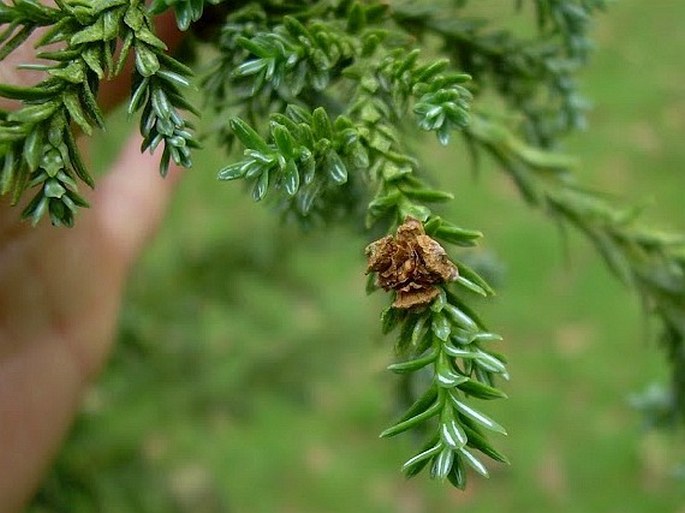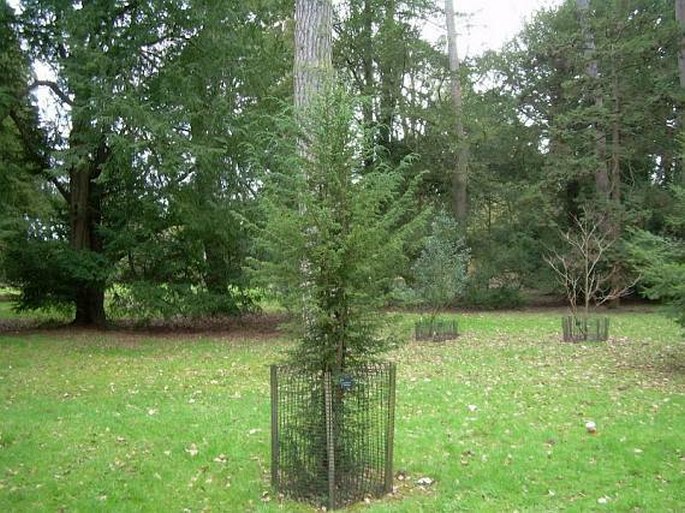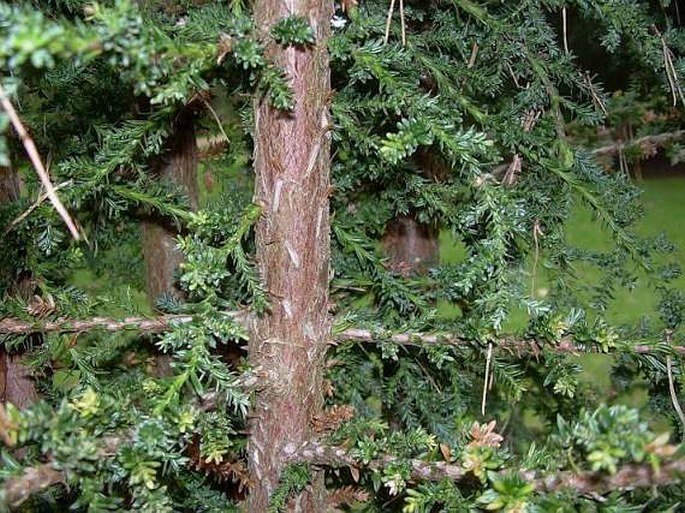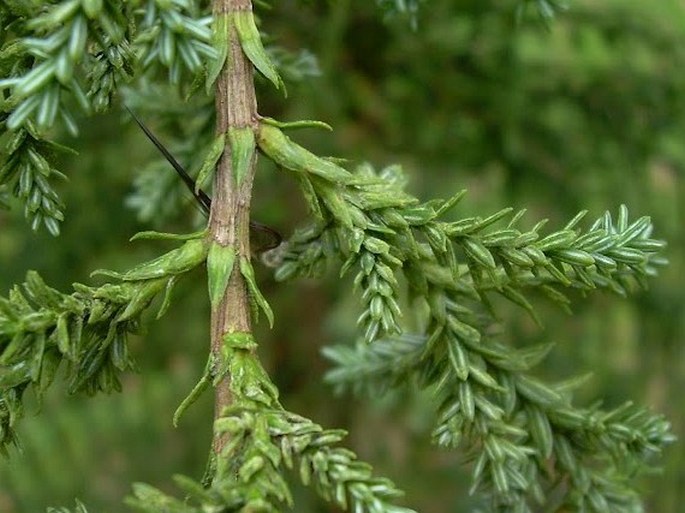Syn.: Cupresstellata patagonica (Hook. f. ex Lindl.) J. Nelson, Fitzroya patagonica Hook. f. ex Lindl., Libocedrus cupressoides (Molina) Kuntze, Pinus cupressoides Molina
Family: Cupressaceae Bartl.

Distribution: Southwestern South America – Central Chile (Los Lagos region) and adjacent areas of Patagonia in Argentina (province of Chubut, Neuquen, Rio Negro). Monotypic genus.
Ecology: It grows in temperate rainforest with plenty of rainfall and mild winters, the minimum temperatures rarely reach frost point. The landscape is rugged, so Fitzroya grows in slopes from sea level at the coast of Chile to 1400 m high in the Andes. It forms pure stands.

Description: Monoecious, rarely dioecious, evergreen tree with conical to columnar crown up to 45(–60) m tall. The trunk is straight, with reddish bark peeling in strips, branches grow horizontally or even overhanging. The needles grow in whorls of three, are linear to narrowly lanceolate, protruding, 3.5 to 6 mm long, slightly curved, with 2 white bands. Male cones are single and grow from the axils of needles, the female inflorescence is cone-shaped with 9 scales arranged in 3 whorls of 3.
Threat and Protection: In the past this tree was intensely and irresponsibly logged. Today is protected by federal laws in Chile and several national and nature parks have been created. According to the IUCN Red List is classified as endangered (EN), it’s also shown in the list of plants protected by the Convention on International Trade in Endangered Species (CITES).
Uses: Reddish-brown timber is lightweight, durable, easy to work. In the past has been used for furniture, shingles and masts. Dure to the rarity of the species, currently the timber is not industrially used.
Note: It’s the sole species in the genus Fitzroya. As other members of the cypress family (Cupressaceae), its size and longevity are quite remarkable. One individual was recorded to be 3622 years old, the second oldest in the world after Pinus longaeva. It is also the tallest tree in South America with an average height of 40–60 m, exceptionally 70 m.


These images were taken in culture.


